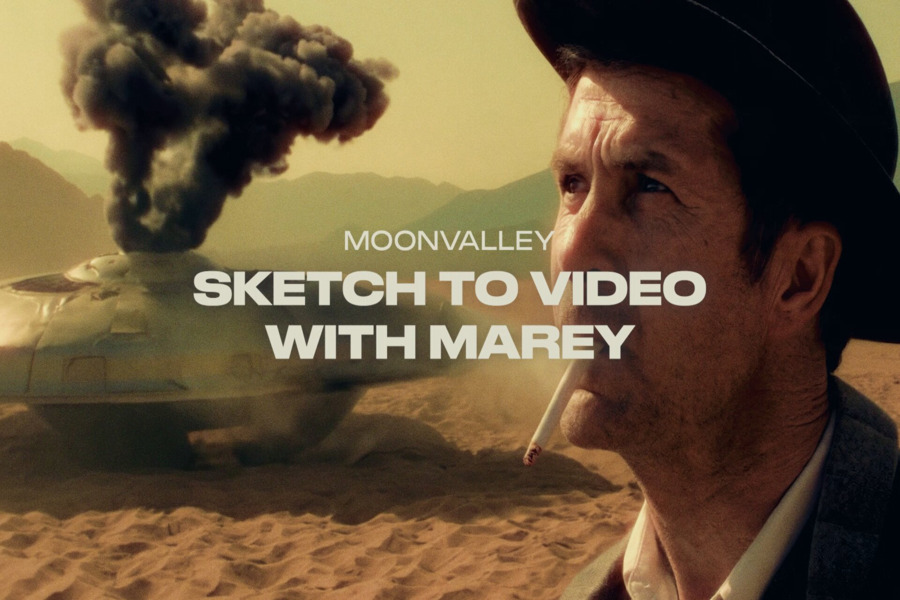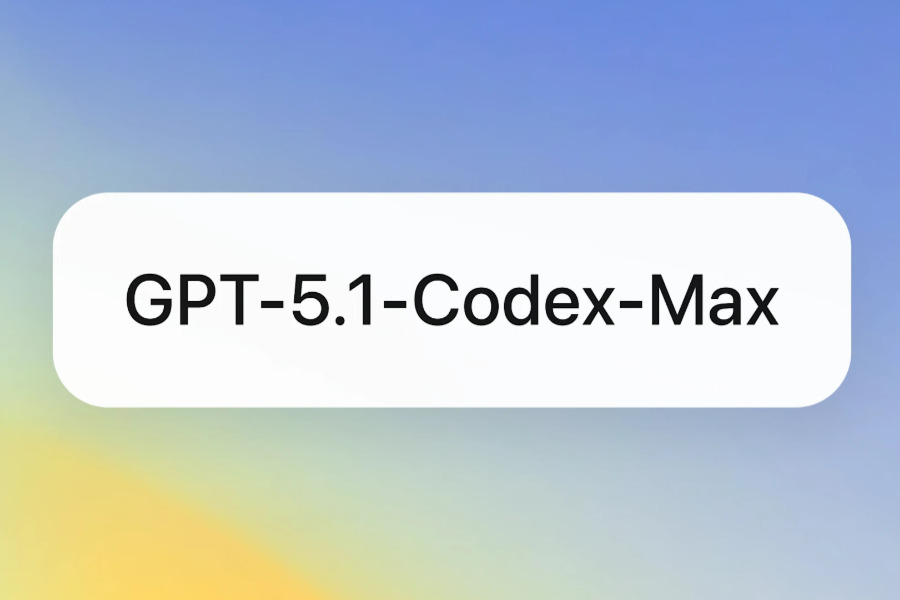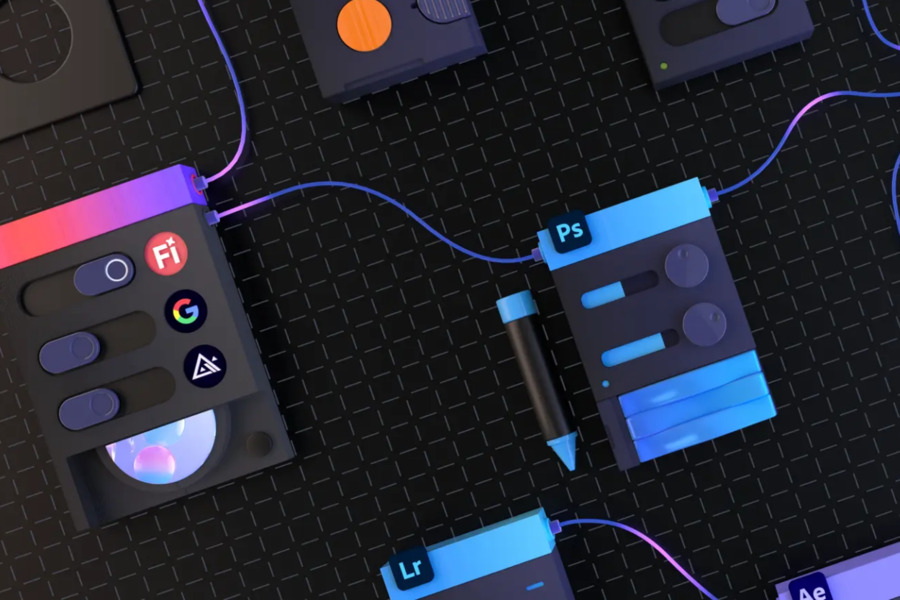The video production industry is experiencing a paradigm shift with its latest innovation—Moonvalley‘s Sketch-to-Video. This cutting-edge feature, integrated into their advanced Marey video model, enables users to transform rudimentary sketches and text prompts into high-quality cinematic footage.
As generative AI continues to redefine creative workflows, Moonvalley’s solution stands out by merging accessibility with professional-grade output, catering to filmmakers, advertisers, and independent creators alike.
What is Moonvalley’s Sketch-to-Video?
Moonvalley’s Sketch-to-Video fundamentally redefines traditional video generation paradigms.
Users simply provide a basic text prompt and a hand-drawn sketch, and the Marey model then produces high-quality video footage that adheres to realistic physical laws.
This feature supports transformations from simple line drawings to complex scenes, generating videos at 1080p resolution, 24 frames per second (fps), and a maximum length of 5 seconds, meeting the essential requirements of professional film and video production.
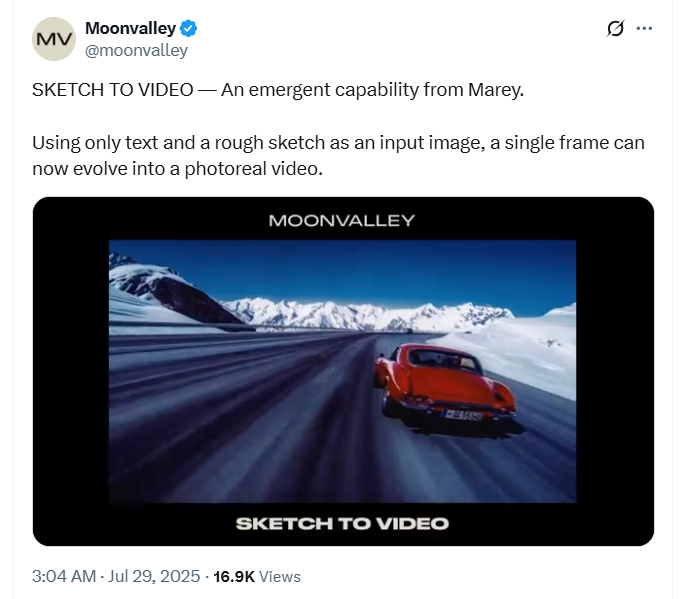
Unlike conventional generative models that often rely on intricate and precise text prompts, Sketch-to-Video leverages intuitive visual input, making it accessible even for non-professional users. Whether it’s a director utilizing the feature for pre-visualization, an advertising creative developing rapid prototypes, or an independent artist exploring new forms of artistic expression, this functionality significantly lowers the barrier to entry for video creation.
The Powerhouse Behind Sketch-to-Video: Marey Model
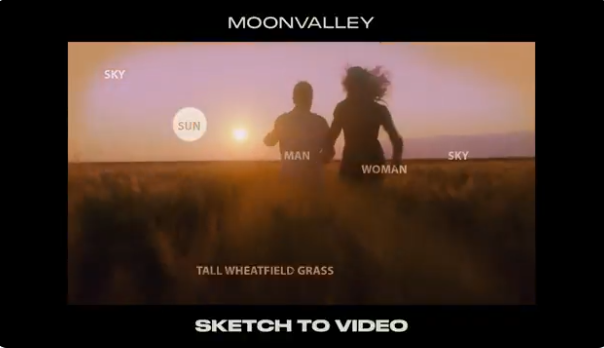
The Sketch-to-Video feature is powered by Moonvalley’s Marey model, an AI video generation tool specifically engineered for professional film and video production. According to Moonvalley, the Marey model has been rigorously trained exclusively on fully licensed, high-definition video footage.
This meticulous approach to data sourcing deliberately avoids the copyright disputes that can arise from unverified data origins, making it a “commercially safe” solution highly favored within Hollywood and the advertising industry. Numerous major production studios and advertising agencies are reportedly already piloting Marey in their projects, with notable early adoption in the production of HBO’s “Menudo: Forever Young” documentary.
Another significant advantage of the Marey model lies in its robust control capabilities. Beyond supporting sketch and text inputs, Sketch-to-Video also allows users to simulate realistic camera movements through “camera control” or adjust the trajectories of objects within a scene using “motion control.”
Moonvalley’s Sketch-to-Video’s Future Developments
Moonvalley has confirmed that Sketch-to-Video is merely the first phase of Marey’s evolution. Upcoming enhancements include:
- Advanced lighting controls for mood customization.
- Deeper object trajectory adjustments for complex animations.
- An expanded character library for richer storytelling.
These updates will further solidify Moonvalley’s lead in the competitive AI video generation space, where rivals like OpenAI’s Sora and Google’s Veo3 are also vying for dominance. However, Marey’s emphasis on ethically sourced data and granular creative control gives it a unique edge.
Conclusion on Moonvalley’s Sketch-to-Video
The release of Sketch-to-Video further solidifies Moonvalley’s prominent position in the rapidly evolving field of AI video generation. In a competitive landscape that includes formidable contenders such as OpenAI’s Sora and Google’s Veo 3, the Marey model stands out due to its commitment to ethically sourced training data and its precise control capabilities.
These distinguishing factors have garnered significant industry recognition and praise. Moonvalley’s dedication to commercial safety and creative control positions it as a preferred solution for professionals seeking reliable and high-quality AI-powered video creation tools.
How do you envision Moonvalley’s Sketch-to-Video feature transforming the independent film industry?
What role do you envision for AI in the future of independent filmmaking? Share your thoughts below.
